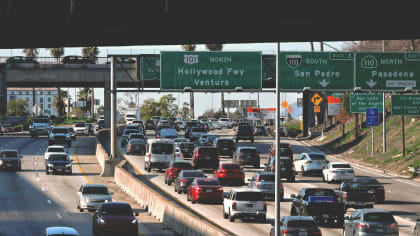SCION'S HIGH PLAINS DRIFTER
2013 Scion FR-S
This article is from our archives and has not been updated and integrated with our "new" site yet... Even so, it's still awesome - so keep reading!
Published on Sat, Aug 11, 2012
By: The LACar Editorial Staff

The long-awaited successor to the legendary Toyota AE86 has arrived. The 86 is the humble Toyota Corolla GTS immortalized by the popular anime series about illegal drifting on the streets of Tokyo, "Initial D". That car had one key feature common with the most popular drifting cars—rear-wheel drive. Although the new RWD car wears a Scion badge, the “86” emblem on its front fender makes its lineage clear. LA Car’s Greg Nakano finds out if the Scion FR-S lives up to the hype.
By Greg Nakano
YES to the Scion FR-S
Since the first vehicle release, Scion has been known for thinking outside the box—taking gorilla and viral marketing to a new level, and selling vehicles at an affordable price with style. Owning a Scion and being involved in the Scion community created a lifestyle around the brand. Now ten years later since its entry into the United States, Scion launches its most ambitious product: The all new Scion FR-S. This rear-wheel driver brings the “sport” back to sports car.

The Body/Chassis/Suspension
Scion has always been known for taking bold steps in the design of their vehicles. In a US market where most manufacturers think bigger is better, Scion took a leap in the other direction. Taking inspiration from the Toyota 2000GT and AE86, they designed a body that is aerodynamic, sleek and low to the ground. Channeling and managing air on all sides of the car gives the FR-S a great sense of balance and stability. Over the years, it seems vehicles have slowly lost the beautiful lines that everyone has loved and been drawn to.
The Scion FR-S brought it all back with its bold front fascia, sharp lines and aggressive fenders. This is complemented by its sleek wide rear fascia, dual exhaust lower panel, and sporty projector-beam halogen front lamps and LED illuminated taillights. The details don’t stop there. Every piece of the FR-S appears to be engineered for form and function. The under belly of the FR-S received a belly pan traveling from the front of the vehicle to the rear diffuser. All these aerodynamic elements give the FR-S a drag coefficient of 0.27—the same as the Nissan GT-R. The wiper arms, blades and washer nozzles are all mounted under the hood to reduce wind noise and keeping the clean appearance. To top it off, the details of the new iconic 86 badge is affixed to the sides of the vehicle. This added detail brings back the nostalgia of the AE86 and also signifying the new boxer engine used in the FR-S. The boxer engine helps the FR-S achieve an extremely low center of gravity. The front-engine, rear-drive configuration provides an impressive 53 percent front and 47 percent rear weight distribution.
In the growing number of cars released every year, it seems the performance aspects of a car are often overlooked. While a sporty feel, refined suspension and sharp steering response may take a back seat elsewhere, it’s not the case with the Scion FR-S. The chassis of the Scion utilizes a newly developed lightweight design that takes advantage of high tensile strength steel. A pagoda roof design to enhance aerodynamics and reduce weight, aluminum hood and a new innovative front fender design reduced the amount of sheet metal used. With the boxer style engine, a lower center of gravity is achieved. The FR-S uses a MacPherson strut front suspension with a twist. An L-shaped lower arm was reversed positioned to alleviate room for the boxer engine, allowing it to be mounted as low and as far back to the vehicle’s center. A double wishbone suspension was used in the rear to provide a more stable and agile feel with a roll axis that compliments the front suspension.
In my years of testing and driving cars, Scion has really outdone themselves with the FR-S. The turn-in, sporty, yet planted feel is something all manufacturers need to aspire to. This is a true sports car for the enthusiast market.

Interior
Just like the exterior of the Scion FR-S, the interior is not overlooked. It’s clear that the interior was designed around the driver and for form and function. The seats are track style, holding you in place under tight G turns. The steering wheel is optimized for quick response with a small 14.37-inch diameter. Glancing to your left and right, the dashboard is design symmetrically so that the driver will be able to recognize stance changes in the vehicle. The composition of the dash is designed to reduce window reflection and glare. This is something that is often not taken into account on performance vehicles, but it plays a key role in maximizing visibility during track driving.
Heritage and racing-inspired elements can be seen throughout the interior. Staring past the steering wheel is a racing-inspired gauge cluster: a large tachometer in the center, with vehicle speed to the left, fuel and oil level to the right. For quick glances, a digital speedometer and gear indicator is located in the center tachometer. Another nice function of the tachometer is the ability to set a rev indicator that has both an audible and visual warning. This can be set in 100 rpm increments from 2000 to 7400, which will also flash red above the 7400 redline area. Keeping the enthusiast in mind, Scion designed the rear seat to fold down to have enough room to fit four extra wheels for those changing them at the track.
The vehicle tested is equipped with the BeSpoke Premium Audio System. “Premium” may be a bit understated: With 200 watts coming from the head unit and 140 watts from the external amp, bringing a total maximum power at 340 watts power is not a problem. This is pumped through eight speakers throughout the interior a 1-inch tweeter & 3.4-inch speaker in the instrument panel, 6.3-inch front door woofer and a 3.4-inch rear quarter speaker. If that isn’t enough, there are six RCA outputs for the front, rear and subs that allow you to expand the speaker system and add external apps. Of course, the BeSpoke system doesn’t stop there. A 5.8-inch LCD touch screen display controls the whole system.
Our FR-S has Bluetooth compatibility for hands free phone communication, but the Bluetooth pairing doesn’t stop with just making calls. It also allows you to stream music from your library over the stereo and also listen to PANDORA internet radio through the iPhone and for those needing a different type of connection an AUX and USB audio input is also available. XM satellite radio is an available option as well. There is another side to the BeSpoke, which is powered by Zyphr. Scion has always been about the lifestyle of a vehicle, but now you can stay connected to it in a number of different ways. The app-based multi-media system allows you to view your Facebook wall, view and send tweets, use local searches like Yelp, internet radio, voice recognition, directions and even view your friends’ locations on a map. It is just too much to completely take in while I had the vehicle.

Engine and Transmission
With a joint collaboration between Toyota and Subaru to build the new sports car, the engine and transmission possibilities are abundant. Keeping with the theme of the vehicle for performance and handling, the power plant of choice was the Subaru boxer engine. Choosing an engine of this layout keeps the weight down as low as possible, creating an extremely low center of gravity in the FR-S. This naturally aspirated four-cylinder horizontally opposed engine produces an incredible 200 horsepower and 151 pound-feet of torque. The engine development didn’t stop with choosing which engine layout they were going to use. Toyota and Subaru worked together to create their first D-4S (Direct Injection) technology in a boxer engine. Using both direct injection and port injector technology together, they can control each independently or in combination with the other to optimize combustion efficiency in all driving conditions. This combination allows the FR-S to enhance cooling and AFR efficiency for an exceptional 12.5:1 compression ratio—all while still achieving 22 miles per gallon in the city and 30 on the highway (EPA ratings) with a LEV II emission certification.
The Scion engine was worked even more to provide the performance and longevity they were looking for out of the new engine. On a side note, something that I found both funny and interesting was the Sound Creator. For years, manufacturers have been creating cars that eliminate the noise from outside the vehicle in both road noise and engine noise. While that can be great for some, this just wasn’t going to cut it for a performance vehicle like the FR-S. So the Sound Creator pumps engine noise into the cabin of the vehicle under spirited driving conditions. Consequently, you can get the real grunt and sound of the engine expected from a sports car.
Connected to this great new engine is the newly developed RA62 six-speed transmission, which provides a nice positive and crisp feel. In the first three gears, a shorter shift stroke and triple-cone synchros are used for a quick and smooth transition through the upper RPM band. To top it off, the rear end is equipped with a Torsen limited slip differential with a 4.1 gear ratio.

Conclusion
The all new Scion FR-S comes at a time when true sports car are few and far between. Refreshingly, everything designed and used in the new FR-S appears to have been out of a passion for driving. Scion has built a car that is going to be talked about and aspired to for years to come—and to think this all comes at a price tag of around $25,000. Testing cars for LA Car and working at AEM*, I am often asked how I like the car, how it handles, and how is the power. But the one question I’m always asked is “would you buy one?” For the Scion FR-S, it’s an YES.
*The former crew chief for import racing world record holder Stephan Papadakis, the author is currently involved with Special Projects for AEM (Advanced Engine Management).
For more information about Scion products, go to www.scion.com
SPECIFICATIONS
Name of car:
2013 Scion FR-S
Price:
$24,995(Base Manual)
$26,055(Base Automatic)
$25,909(As Tested)
EPA fuel economy rating (miles per gallon):
22 city/30 highway
Engine:
FA20 2.0L 4-cylinder boxer, DOHC 16 valve, dual variable valve timing, D4-S Direct and Sequential Port Injection

Horsepower @ RPM (BHP):
200 @ 7000
Torque @ RPM (lb-ft):
151 @ 6400-6600
Transmission:
RA62 6-Speed Manual Transmission with Torsen Limited Slip Differential
Drive configuration:
Front engine, rear wheel drive
Steering:
Electronic Power Steering
Suspension:
Front MacPherson Strut with 18mm stabilizer bar
Rear double wishbone with 14mm stabilizer bar
Brakes:
Front 11.6” ventilated disc
Rear 11.4” ventilated disc
Anti-Lock brake system
Wheels and tires:
Wheel type: Scion Aluminum Alloy
Wheel size: 17 x 7 in
Tire type: Michelin Primacy HP summer tires 215/45R17 87W
Dimensions:
Length: 166.7 inches
Width: 69.9 inches
Height: 50.6 inches
Curb Weight (lbs./kg): 2758/1251
Performance:
0-60 mph: 6.2 seconds
Quarter-mile elapsed time: 14.8 seconds





